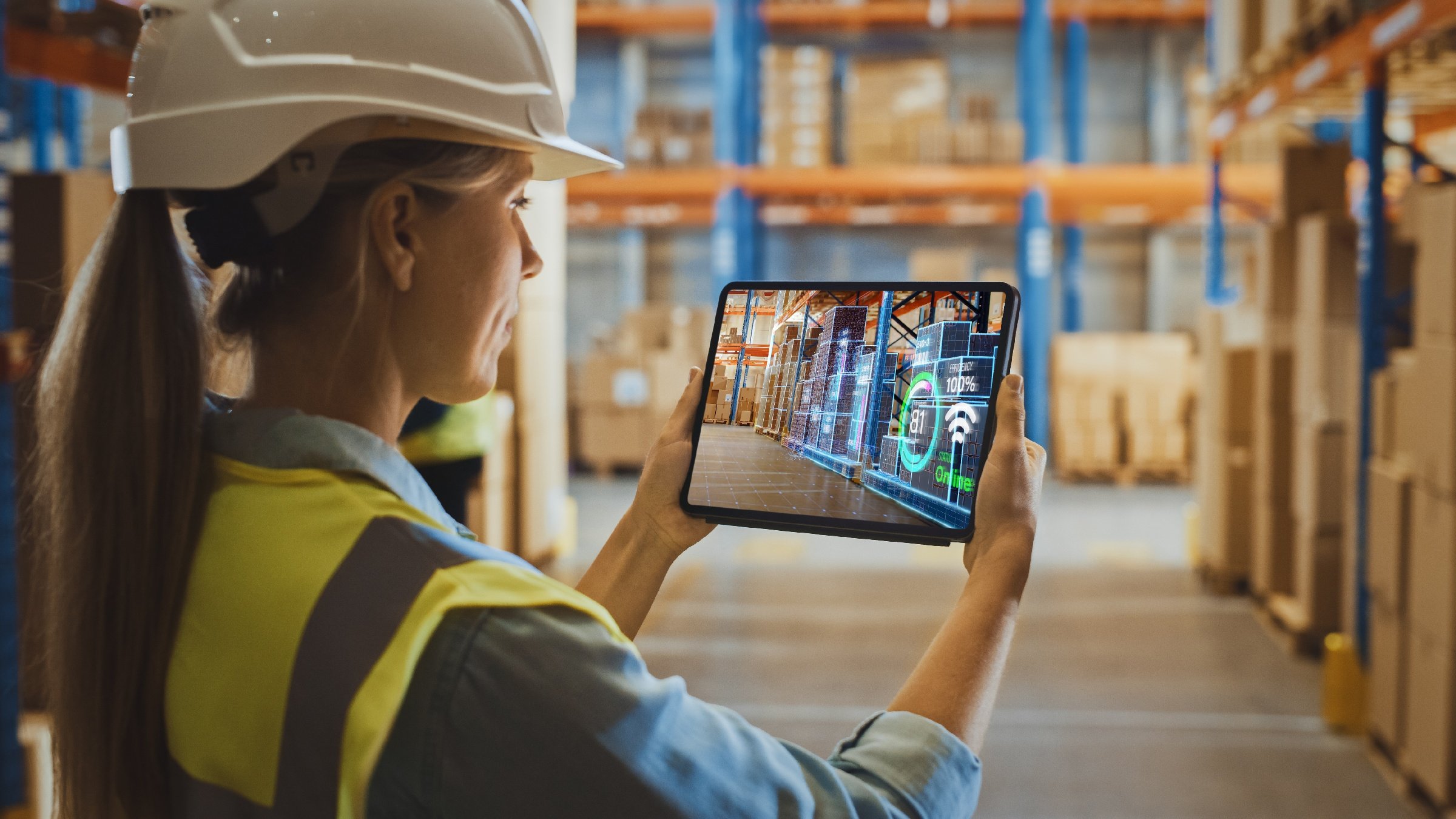- Home
- Knowledge center
- Blog
- Digital twin supply chain: the key to more agile operations
Blog
DIGITAL TWIN SUPPLY CHAIN: THE KEY TO MORE AGILE OPERATIONS
In today's digital transformation era, businesses are always on the lookout for new and innovative ways to improve their operations. One such way is using digital twins. According to estimates, between 2022-2032, the global digital twin market is expected to grow 10-fold1.
In this blog post, we will explore how this technology works, define what a digital twin supply chain is, and share a practical example of using the digital twin in logistics. We will also check the differences between digital twins and simulations. Let’s get to it!
So, what is a digital twin?
The digital twin is a virtual copy (hence the name “twin”) of a process, product, or service, bridging the physical and digital worlds. Interestingly, but perhaps not surprisingly, one of the first users of digital twin technology was NASA, as the agency was forced to develop ways to test, operate, and maintain systems at a (very long) distance.
What is digital twin technology in the supply chain?
The technology refers to creating a virtual replica of physical assets, processes, or systems within the supply chain. For example, a digital twin supply chain is a virtual representation of a real supply chain. It mirrors the real-world counterpart and incorporates real-time data and advanced analytics to provide a comprehensive view of the supply chain's operations, performance, and behavior. This supply chain twin enables you to simulate, monitor, and optimize your supply chain processes in a digital environment.
What can a digital twin be used for?
You can use the digital twin in the supply chain for various tasks, e.g., route optimization, inventory management, process optimization, predictive maintenance, and supply chain resilience planning. Additionally, digital twins make it easier for all stakeholders to share data and work together to improve efficiency.
What is a digital twin example?
Let’s check a use case in logistics: a digital twin warehouse.
Businesses can create a digital copy of their physical warehouse by integrating real-time data from sensors, Internet of Things (IoT) devices, and warehouse management systems. This digital twin warehouse can then be used to visualize, simulate, or emulate warehouse processes to optimize inventory management, layout design, resource allocation, and process flows, resulting in improved productivity and reduced operational costs. To put it simply, it’s a way of doing things you need to do with your warehouse without having to really do it through:
- Visualization: You can visualize and monitor both mechanical/equipment status and process status within the warehouse. While automation suppliers typically offer tools for monitoring equipment, integrating data from the warehouse management system enables comprehensive visualization of warehouse flows and processes.
- Simulation: Digital twins allow for simulating hypothetical scenarios, such as evaluating the impact of automated solutions, warehouse redesigns, or changes to manual picking processes. By assessing these scenarios virtually, you can predict the efficiency levels and expected return on investment (ROI) of potential solutions.
- Emulation: During the implementation phase of a warehouse project, digital twins prove invaluable. Why? Because you can test step-by-step the proposed solution and familiarize operators with the system before it goes live. Moreover, digital twins facilitate training sessions and error-handling simulations, ensuring a smoother transition during the go-live phase.
Why use a digital twin?
Here are the top 3 benefits of using digital twin in the supply chain:
- It facilitates proactive decision-making by providing real-time insights into operations. This means you can respond faster to any issues and minimize downtime.
- You can test and optimize your strategies without impacting physical operations. This supports continuous improvements.
- It enables predictive analytics and scenario planning, allowing for proactive maintenance and risk mitigation.
What is the difference between digital twins and simulation?
While there are similarities, there are also key differences between simulation and digital twin technology that are important to understand.
- Simulation typically focuses on creating models and running scenarios to predict outcomes.
- Digital twin technology incorporates real-time data from physical assets or systems, providing a dynamic representation of the actual entities. Therefore, digital twins go beyond static simulations, offering a comprehensive view and allowing for live monitoring, optimization, and decision-making.
By creating digital twins of physical assets, processes, or systems in the supply chain and leveraging real-time data, you can gain valuable insights, optimize operations, and move towards a more resilient and agile supply chain landscape.
WMS and Digital Twin Functionality
Explore our software Astro WMS® digital twin module which can generate a computerized model of reality. This enables you to virtually navigate your warehouse in real-time 3D without physically leaving the office.

.png?width=2156&height=1213&name=warehouse-overview%20(1).png)